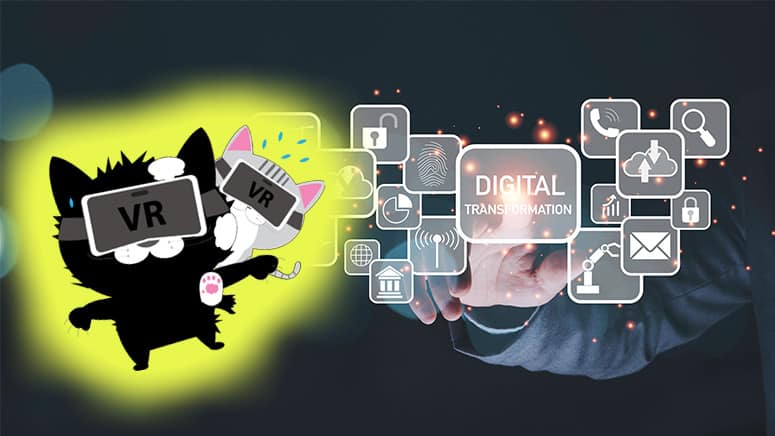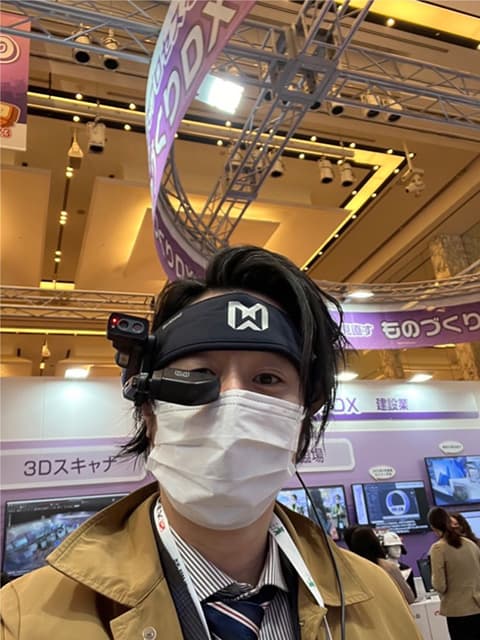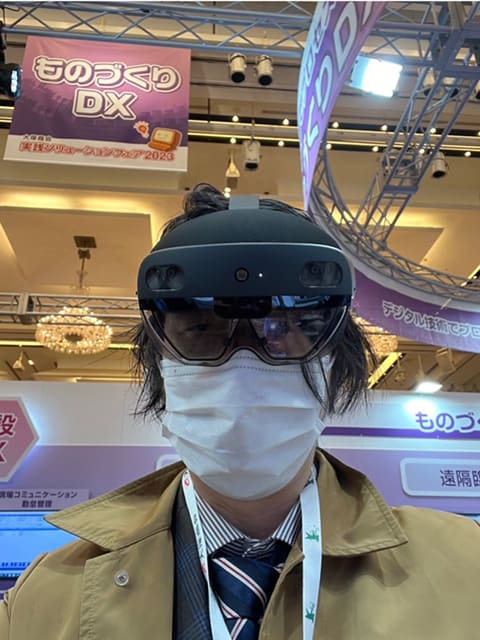DX Fair

We recently visited the Practical Solutions Fair 2023 organised by Otsuka Corporation.
This exhibition is mainly focused on DX (Digital Transformation) which aims to increase on-site productivity through the application of digital technology.
In this post, I introduce some of the exhibits that caught our attention.
On-site measurement technology
The sites to which we deliver our products often have old buildings. So, there are sometimes no drawings of the site, or even if drawings exist, they often differ from the actual dimensions and the structure. We, therefore, actually go to the site and measure the installation location with a scale or similar tools. However, the reliability of the measurements varies depending on the person taking the measurements. There are inevitably cases of inaccuracy or omissions. If experienced employees who are used to taking measurements could go to the site each time, there would be no problem, but this is difficult considering the cost of travel and the impact on other work. Improving the measurement skills of younger employees has been a challenge for us.
We found a product which could solve this problem : the Leica RTC360 / Leica BLK360, 3D 360° laser scanners. They measure surrounding pipes and structures while the camera rotates to acquire 3D point cloud data. The scanners were actually quite compact, and it looked like they would be easy to take with to the site.
This 3D point cloud data is difficult to handle as it is, but there was also software 'Class NK-Peerless' that allows this to be modelled easily. At the exhibition, the person in charge of the technology showed us the actual modelling process from the 3D point cloud data. The software automatically recognises pipes and indicates their size (e.g. 150A). We felt this would be useful when connecting new pipework to existing one.
For more information, please follow the link.
ARMONICOS 'Class NK-Peerless' Product Page
Augmented reality (AR) and mixed reality (MR)
It is not easy to get a clear picture when you hear the terms AR and MR. Simply put, AR is a technology that overlays imaginary images and other objects on top of real space. MR is a more advanced version of AR, where various information such as 3D models are projected onto the real space, allowing you to get closer to them and manipulate them according to your hand movements. One of the examples might be 'Minority Report'? Of course, you can find countless examples in other Hollywood films, though.
Now, we asked a technical staff how this technology could be useful in the field of manufacturing. The products on display were 'REALWEAR Navigator 500' and 'Microsoft HoloLens 2'. According to the staff, they have three main advantages.
- Can project procedure manuals, etc. The operator can work with both hands following the procedures(voice-activated operation possible).
- Enables sharing the line of sight of the on-site worker in real time with people who are not on site. This allows giving clearer instructions.
- The 3D model is projected onto the actual space. Simulating the installation and considering matters like worker's path are easily done.


Our CEO wearing them.
Summary
There were many more, but they cannot be introduced in this article.
I felt that these digital technologies made it possible to save manpower and equalise techniques that are dependent on the skill level of the worker. With the serious falling birthrate and ageing population in Japan, I believe that equalisation of techniques and manpower saving is one of the major challenges that many companies are facing. Digital technology could be a clue to solving these issues.


